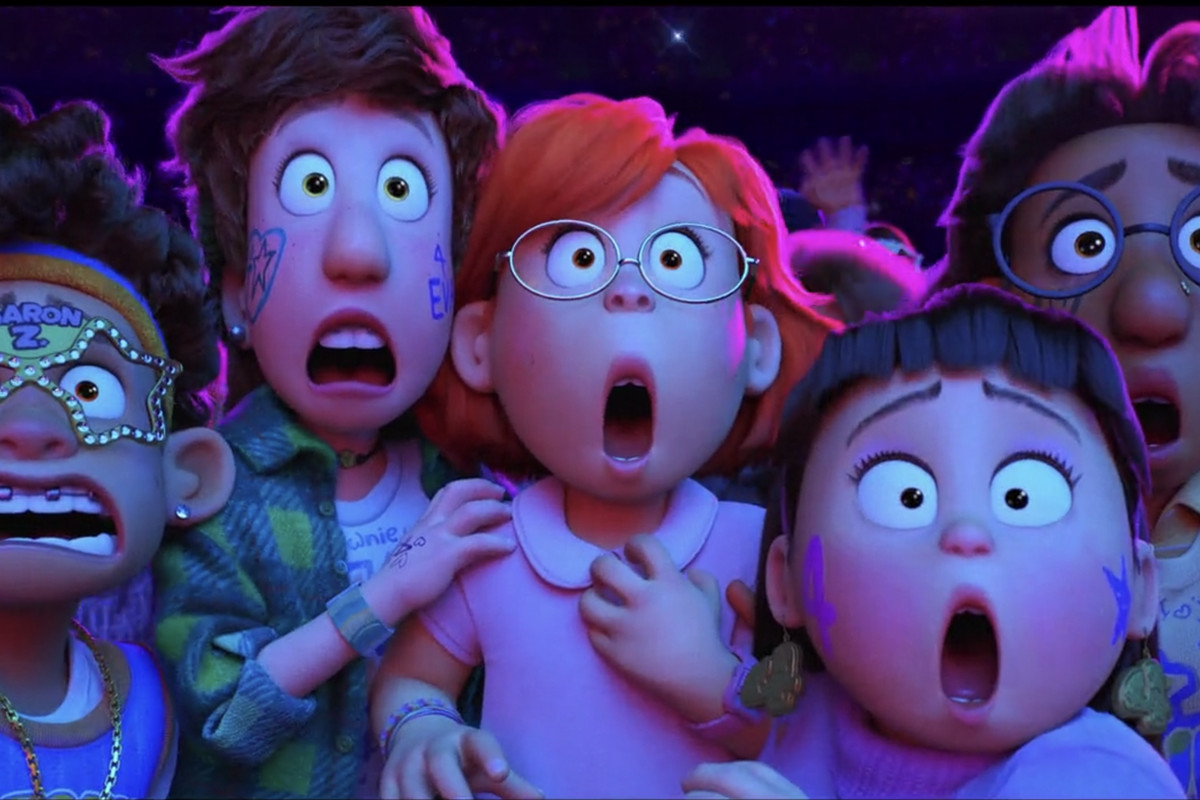Table of Contents Show
Disney-Pixar’s Turning Red (2022) (( Shi, Domee, dir. Turning Red. Feb 21, 2022. )) was a ground-breaking movie, and it continues to be a source of comfort for children and adults alike. Its overlying themes contain important issues such as intergenerational trauma. However, people overlook how true-to-life Turning Red portrays the experience of teenage girlhood. Boy bands, fanart of boys, unique fashion choices, and tween slang are all included, but instead of the girls out-growing these things to be cool, these things are what makes them cool, making it an incredibly comforting and relatable movie for older teens and women who were taught that these feminine things are to be ashamed of. What Turning Red teaches us is that being “cringey” is now not cringey at all — it’s fun.
The History Of The Fangirl
The term “fangirl” was first coined in a 1934 novel by A.P. Herbert, with the term “fanboy” used earlier in 1919, with the terms having the same definition as they do now (( Tearle, Oliver. “Ten ‘Modern’ Words With Literary Origins.” Nov 14, 2013 )). Even in its inception, the term fangirl was used as a derogatory term toward girls who displayed their passion and love for something or somebody. For millennia, girls were expected to suppress their sexualities and passions to seem more “lady-like” and demure, but after the first wave of feminism, more girls felt empowered to express themselves and their wants. Of course, this empowerment was met with shame tactics from men and older women, claiming these girls were being dramatic and that it’s improper for women to act in such a way.
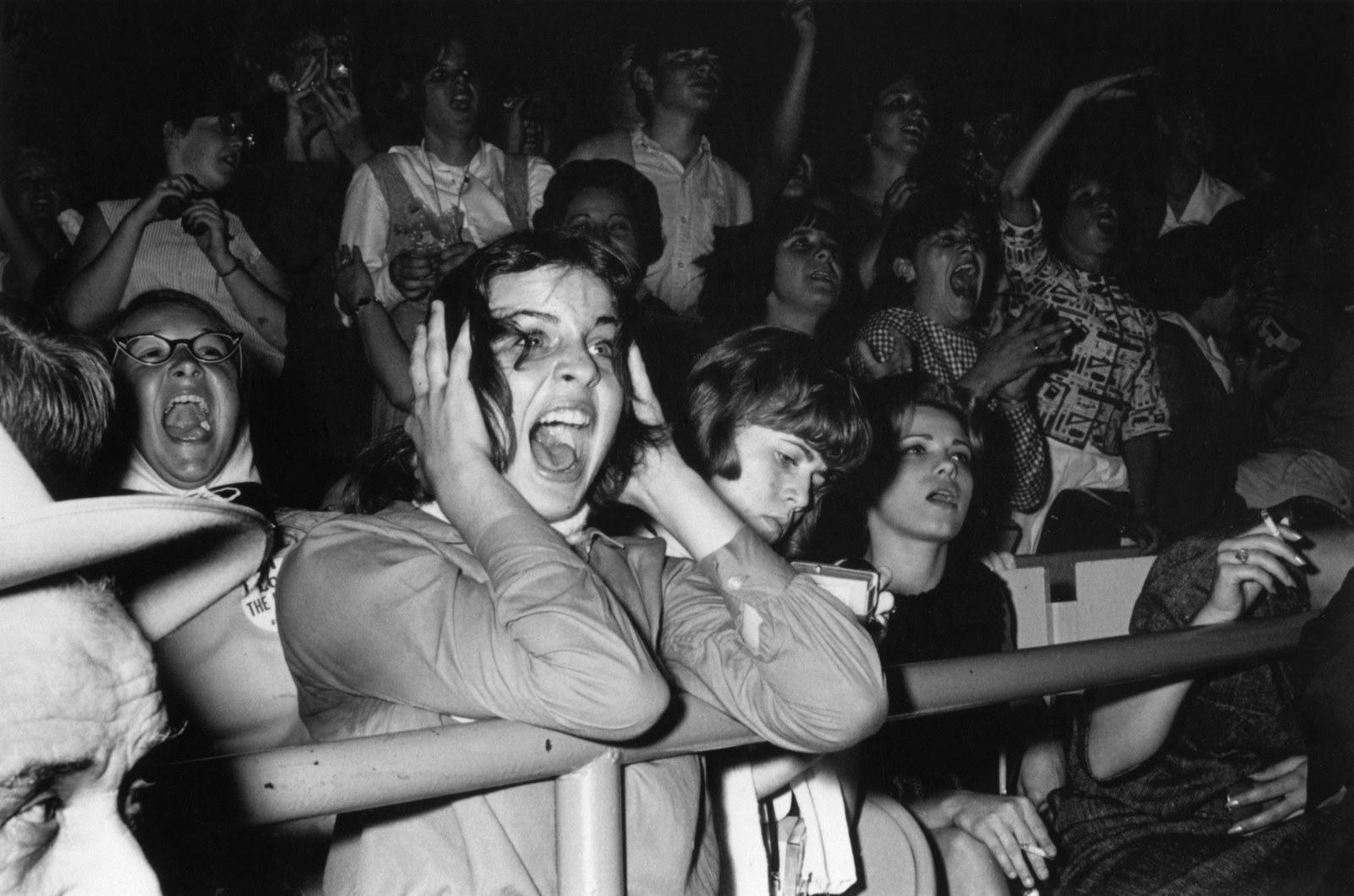
For women to be openly showing their sexualities in the form of “I love Ringo” buttons or screaming as Elvis wiggled his hips was unthinkable. Therefore, the term “fangirl” was associated with obsession, impropriety, sex, and annoyance. However, because girls’ interests have been suppressed for so long, it’s understandable why there was such an explosion in fangirls and their behavior in the mid-20th century. Fangirls passing out at Beatles concerts, clawing at Frank Sinatra onstage, and invading concert venues were, of course, a bit extreme, but these actions were all a result of being unable to properly vent their frustrations and interests in any other sector of their lives. When the opportunity came where they could fully express themselves among other girls, their enthusiasm ballooned until it exploded, culminating in fainting, crying, and erratic behavior.
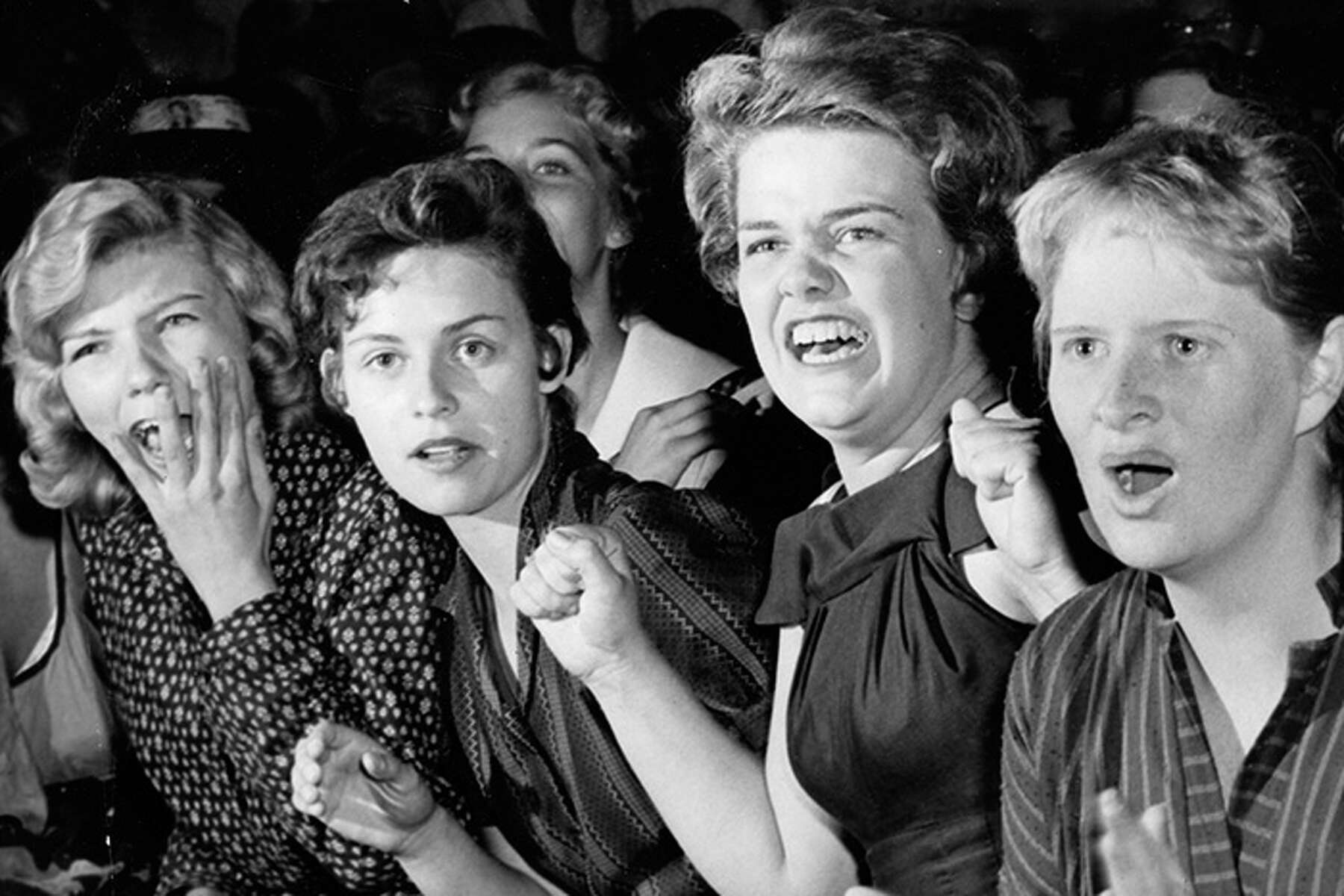
We can see the difference nowadays, where there are more fangirls than ever, but they are not nearly as dramatic and destructive at BTS or One Direction concerts compared to fangirls in the 60s but are just as passionate. That is because modern fangirls are more or less allowed to express their interests with less criticism, especially since they have safe spaces (due to social media and fan conventions) where they can meet other girls and women with their same passions. Because society is generally more accepting of girls expressing themselves and of these safe spaces, girls feel more comfortable in doing so, allowing them to wear merch, openly sing their musician’s favorite songs, and act in “cringey” ways.
However, even though fangirls mostly aren’t seen as sexually corrupted youth anymore, fangirl is still seen as “cringey” and uncool. Cringey cemented a similar definition to its modern-day usage around the 19th as the noun “cringe,” meaning “to recoil in embarrassment” (( Kalia, Saumya. “A Cultural History of ‘Cringe,’ and How the Internet Made Everything Awkward.” May 20, 2022 )). It reflected the fear of social exclusion and still does, where people attempt to reject this social exclusion by rejecting what is considered by the public to be “cringe.” It grew especially in the 2000s with the Internet since it was easier to broadcast people’s embarrassments and failures on the World Wide Web. The Internet became a breeding ground for “cringe” content, causing a whole generation of people to be constantly looking over their shoulders or self-correcting their behavior in order to not be labeled as “cringey.” The word causes self-hatred and insecurities and is now used to laugh at people rather than with them.
That is where Turning Red comes in.
Turning Red (2022): “The Cringey Fangirl”
Turning Red portrays these negative stereotypes throughout the movie, starting with Mei being seen as the “weird” girl from the beginning of the movie. She proudly proclaims at the beginning of the movie:
“I wear what I want [and] say what I want.”
This shows that she is confident in her identity and self-expression. However, right off the bat, people call her “a mildly annoying young lady,” “a major weirdo,” and “an overachieving dork-narc.” All because she is passionate about her interests. Yes, fangirls like Mei can be a bit exasperating at times, but she and other fangirls are looked upon with such disdain that the “crime” of being a fangirl hardly fits the punishment. Mei is considered weird because she and her friends are openly obsessed with 4*Town, an in-universe boyband, and are unapologetic about it.
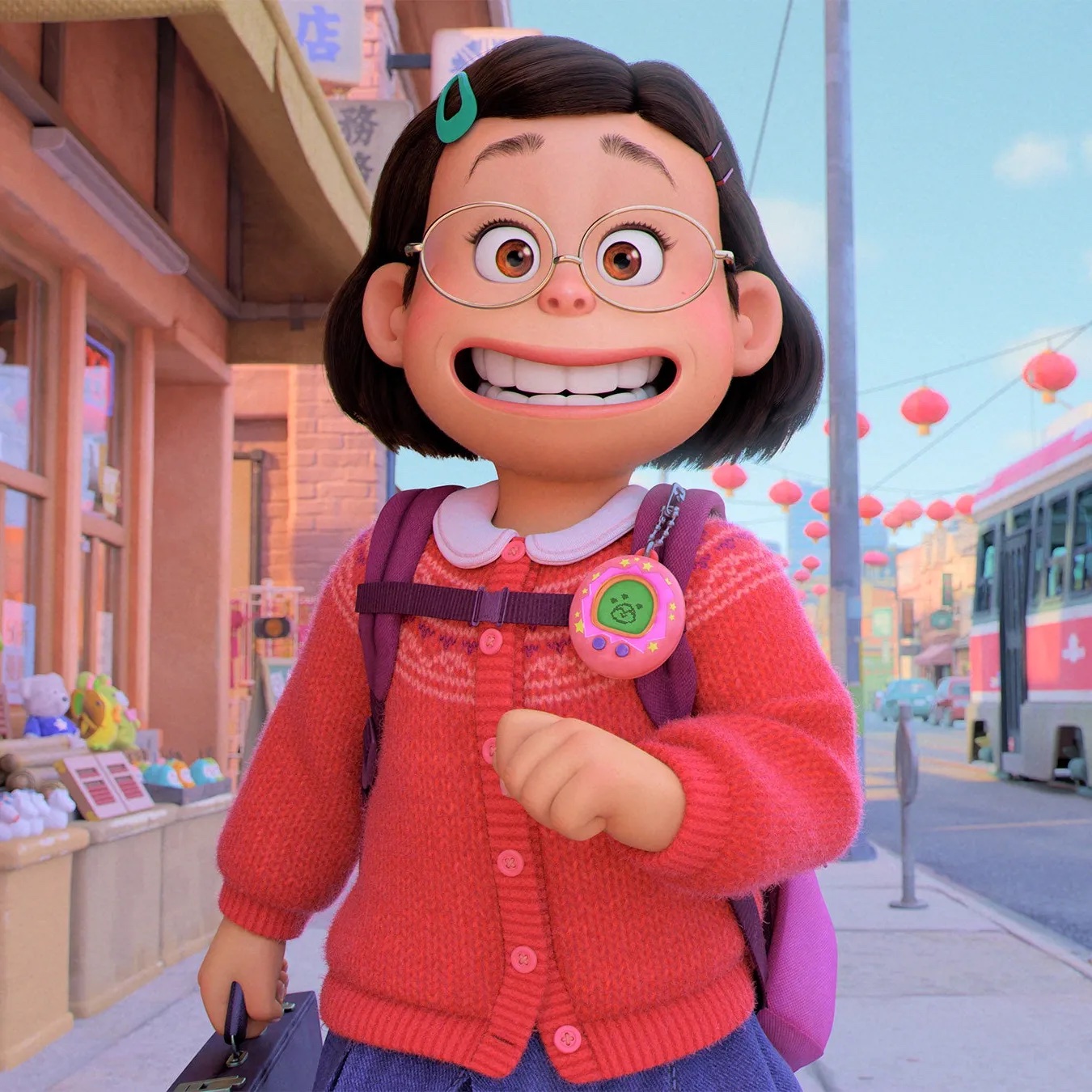
They sing and dance to their songs in the middle of Toronto streets without a care in the world. However, all this confidence comes crumbling down when her mother, Ming, misinterprets Mei’s fanart of her and Devon, the attractive convenience store attendant, as inappropriate and goes to confront him. Her classmate, Tyler makes fun of her for being creepy and all the boys begin to laugh at her after seeing the fanart. Mei immediately retreats into herself, feeling ashamed of her sexuality and fangirl-y tendencies. What she has done (expressing herself and her interests through art) is wrong and shameful (as she interprets it).
She calls herself a “sicko” and questions why she would draw those things in the first place, proclaiming “this will never happen again,” even though fantasizing is a completely normal — albeit highly personal — thing that most people, especially hormonal teen girls, go through. The public humiliation and self-shaming are what starts her transformation into the famous red panda. As it turns out, the “curse” of the red panda was supposed to be a blessing, allowing Mei’s ancestors to protect their families by harnessing their emotions. However, because of modern times, it has become more of an “inconvenience,” as Ming puts it, but it serves as a metaphor (or one of the many metaphors) for how women need to suppress their emotions, or else they are considered dramatic, out-of-control, or unladylike.
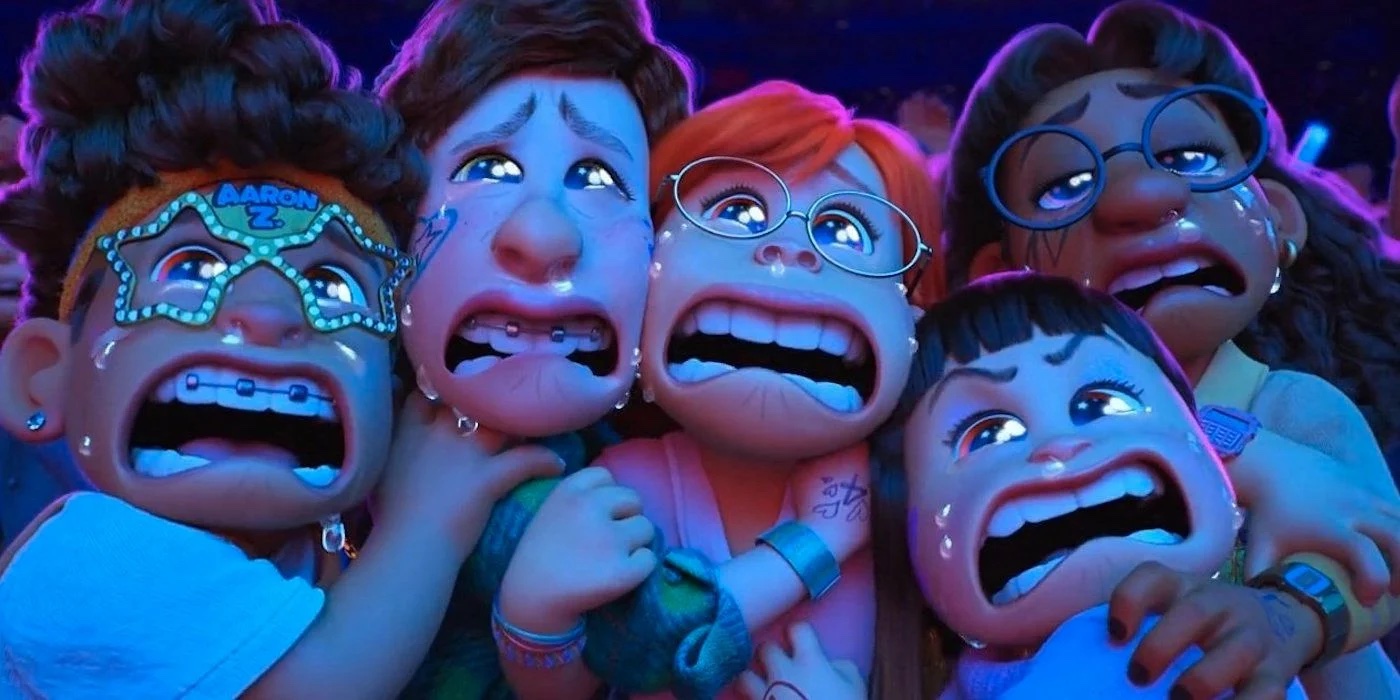
While Turning Red and the red panda stand for many metaphors, such as intergenerational trauma and puberty, looking at it from the lens of a young girl having to suppress her emotions and interests to fit in also makes sense. The entire movie revolves around Mei trying to balance this curse of the red panda with her understanding of her identity. How does this strange phenomenon factor into who she is? During the ceremony that will allow her full control over herself again and put the red panda on the back burner, she realizes that this red panda is part of who she is. She is a person who feels strongly and will not apologize for it unless it hurts others, and she will not allow such an integral part of her (which was put in place to protect herself and her family) to be locked away.
At the end of the movie, Mei does not give up on being a fangirl. She doesn’t stop being cringey or dramatic, and she doesn’t stop feeling strongly toward things, especially 4*Town. All those things are part of her personality and who she is, just like the red panda. The character development in the movie is instead focused on Mei and her parents’ relationship (specifically her and Ming’s relationship) and on her ability to ignore aspersions in favor of focusing on those who matter most: her family, her friends, and herself. She is a cool, proudly cringey fangirl, and that doesn’t change throughout the movie. What does is the way she sees herself and how others see her.
The Importance Of Cringey Representation
As mentioned before, Turning Red is a comfort movie for many girls and women across the globe because of how in touch it is with the teenage girlhood experience and how it represents and deals with tween issues. Many older teens and women nowadays have stories of being bullied for their love of One Direction or being shamed for writing fanfiction or drawing fanart of their favorite characters in a show or book. They were made out to be weird or feel like sexual deviants for having the same fantasies boys are encouraged to have, which is another blatant example of misogyny and how differently boys and girls are raised.

Many girls have lost interest in certain musicians and/or media because they are seen as uncool and are shamed for it too often for them to handle. While it is inevitable that they might have grown out of those interests naturally, just like Mei may eventually grow out of her obsession with 4*Town, it’s the fact that they were forced by mass humiliation to leave their interests behind, lock them away, or pretend they don’t like them at all. Instead of openly discussing Backstreet Boys lyrics with their friends, they have to retreat and listen to their songs in private (like Mei did) or stop listening to them at all.
This abandonment of interests impedes their growth and self-image so much so that many women are still trying to figure out what they like or how to healthily express their passions. Mei is lucky that she figured it out early with the help of the red panda and her friends and family, and this generation is lucky that they have a character like Mei they can relate to so they feel represented and validated in their quirky interests and unique expression of those interests. Any time a movie helps a group of people (especially one as large as teen girls) find their voice and project it onto the big screen, it should be considered a momentous and important moment.
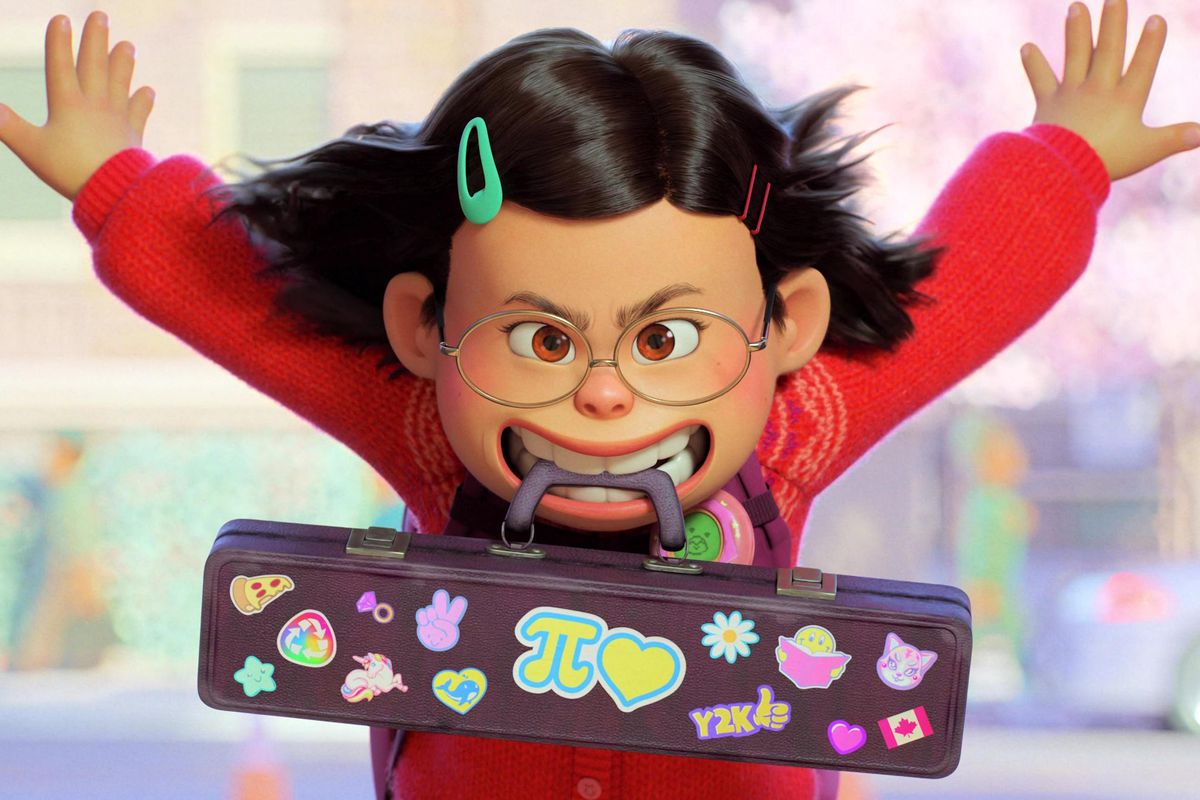
Because of Turning Red, girls now have a metaphorical shield of armor to protect them whenever they feel ashamed of their interests, and whenever they need a reminder that their interests, no matter how feminine or cringey, are valid and are an important part of their personality. Women now can also look back on those times when they were a little annoying and excited about their unique passions with sweet nostalgia instead of cringing. They can say, “Like Mei, I wear what I want, say what I want, and am not afraid to let everyone know” (( Yuen, Tabitha. “Turning Red” Made Me Feel Understood As a Chinese-American Teen.” Mar 18, 2022. ))
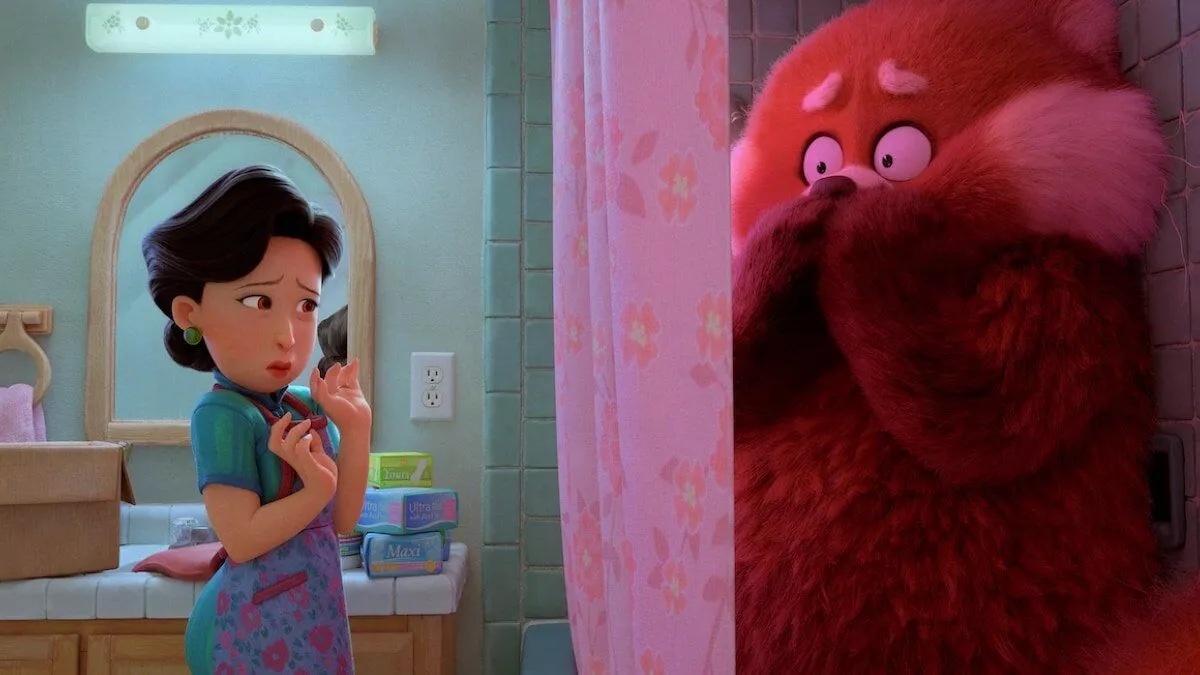
The former represents growth and character development; the latter represents shame and shrinking away from who they truly are. Allowing girls to see somebody like Mei unabashedly accept this giant, smelly, and inconvenient panda as a part of herself helps girls accept some of the less polished and embarrassing parts of themselves, such as puberty and menstruation (both of which are referenced through the red panda metaphor), and focus on their hobbies and interests. That should be the goal of growing older: looking back at yourself and laughing at your old self’s antics while smiling at how far you’ve come because you were allowed to openly express yourself. So many women have been robbed of this development, and thanks to Turning Red, have begun the journey to restore their former selves.
Turning Red‘s Cringey Reception
No movie is without bad reviews, least of all Turning Red. This article said before how the term “fangirl” is seen with less derision, but it was mostly because Turning Red is about cringey fangirls that the movie received bad reviews. Sean O’Connell stated that the movie was impossible for him to relate to, and trying to do so “wore [him] out.” (( Romano, Aja, “Pixar’s Turning Red is an unlikely culture war battleground.” Mar 17, 2022. )) This can be understandable, but the problem with this review is that this movie is not made for everybody.
It assumes that, because it is a children’s movie, it will have a general, inoffensive moral as many children’s books and movies are. But what this new generation of Disney-Pixar movies shows is that things are not so simple anymore. Turning Red treats children as what they are: people. Children have emotions, and they have brains, meaning they can understand certain complex things. Even if the children don’t completely understand the intricacies of intergenerational trauma or the historically negative connotations of the term “fangirl,” they will understand that Mei is happy when she’s herself in the beginning, sad when she is forced to suppress her personality and her emotions, and happy again when she is allowed to let the red panda — and thus her emotions — reign free.
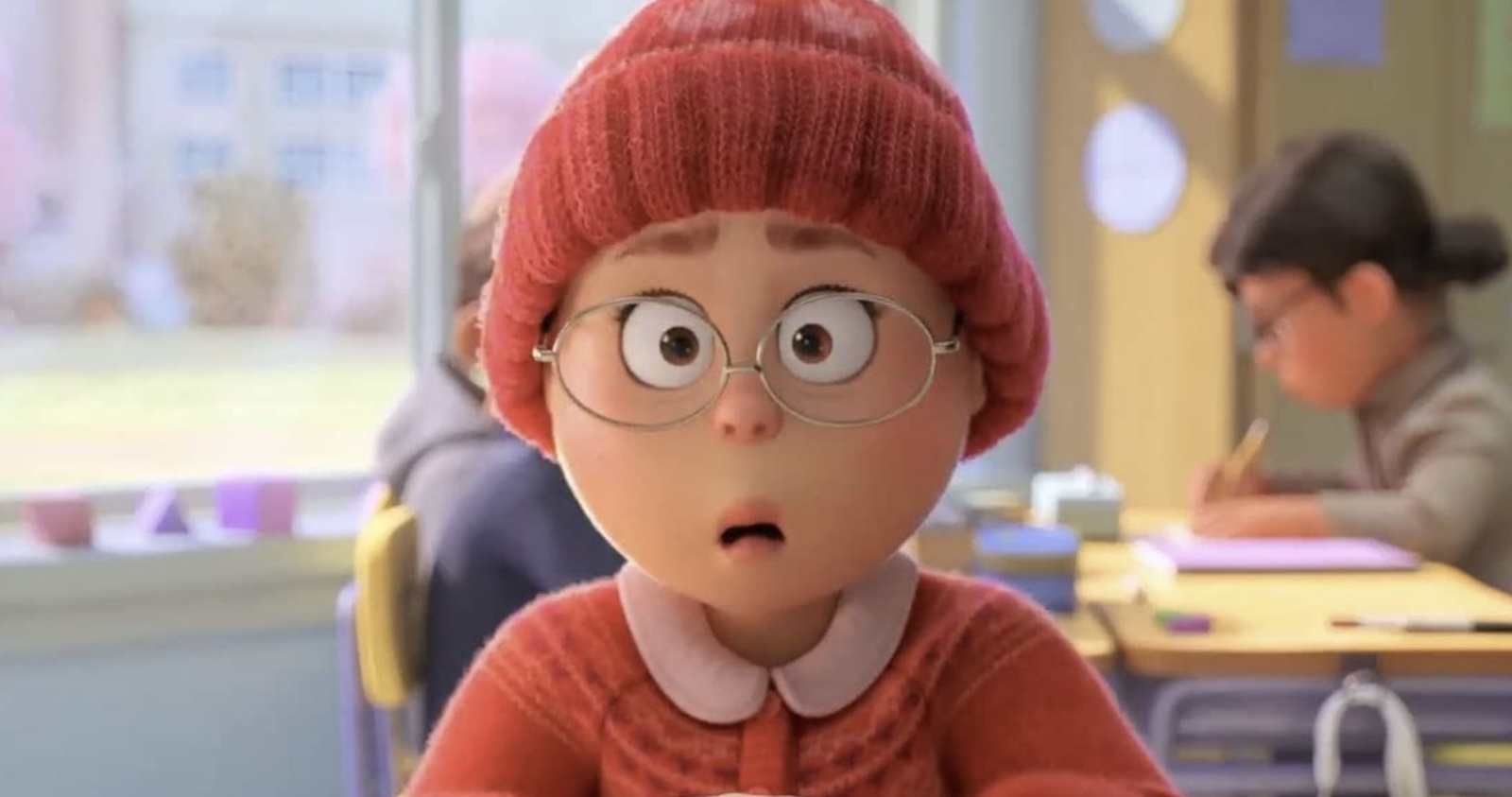
Additionally, some movies should be just for one group of people. Every group of people should feel represented, especially the historically unrepresented groups in Turning Red: Asians (East and Southeast) and women as a whole. There are hardly any movies where a group of women (a group of young girls, at that) is the main protagonists, and in which the main plotline isn’t about men. Men have had their time in cinema; they have The Godfather (1972) or James Bond or The Wolf of Wallstreet (2013), all of which sexualize women, degrades them, treats them as objects, and keeps them as small roles in the film.
Turning Red does nothing of the sort with men. In fact, it portrays men as capable of character development (Tyler escaping toxic masculinity to embrace his love of 4*Town) and as people with complex emotions and motivations (Mei’s father and his acceptance of the red panda), even though the male roles in the movie are not as big as Mei, her friend group, and her mother. Girls and women are allowed to have one movie where they feel represented and empowered just as boys and men feel empowered by movies that portray strong male characters.

Yes, the mention of periods, pads, and cleaning one’s “petals” may be off-putting at first. But why is menstrual health considered so uncomfortable and not “family-friendly?” It should not be such a shock that Disney, a brand catered to children, would put this in a movie when some of those children go through exactly what Mei is going through. If Disney movies can tackle a topic as horrific and dark as death, they can help in normalizing the completely normal health phenomenon that is menstruation and show pads so that every child knows about menstruation and how to deal with it. Menstruation also doesn’t have to be a girl-specific issue; boys should also learn about it.
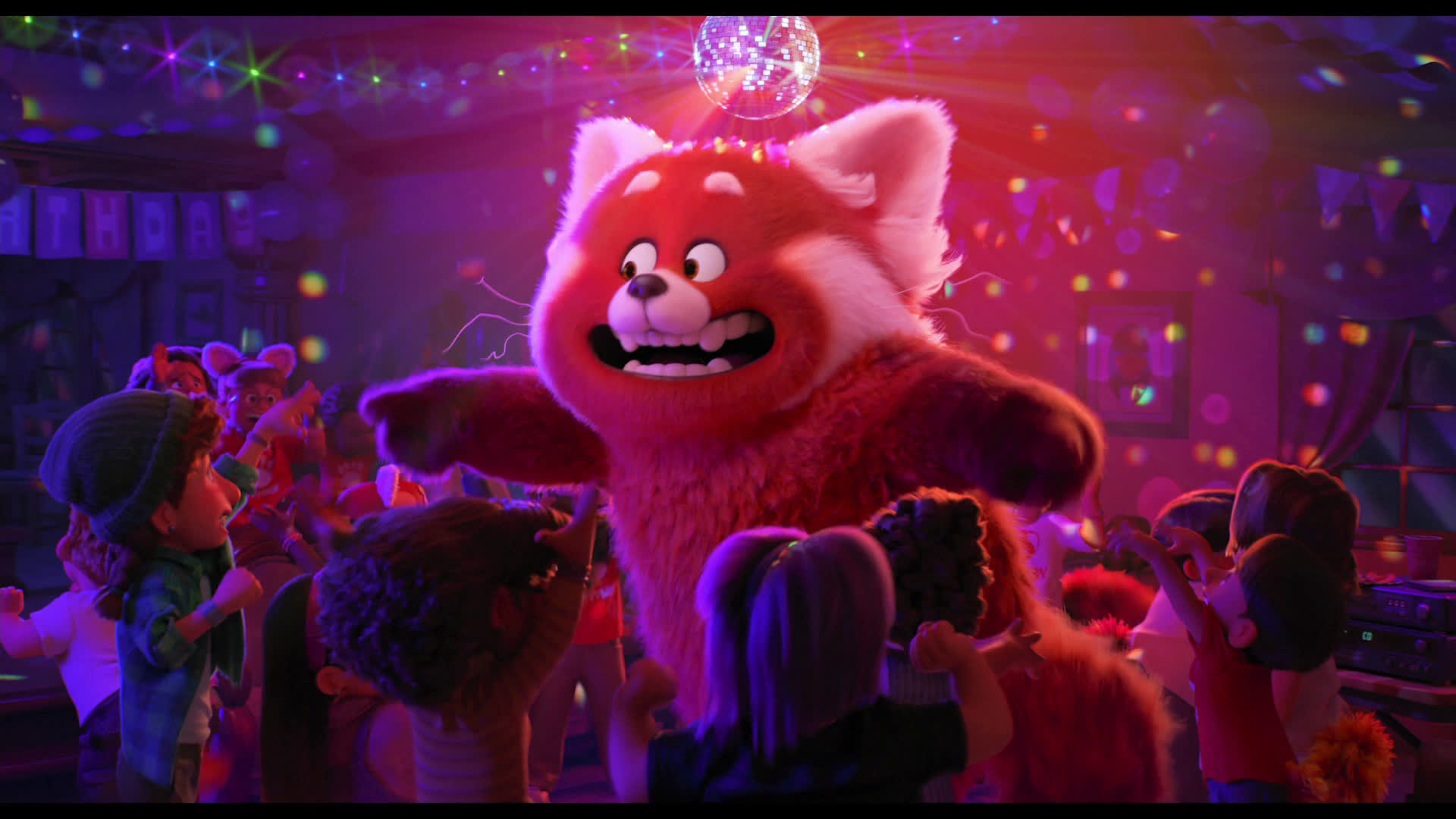
As much as Turning Red‘s intended audience is not gender-specific, it especially applies to girls because they are still taught that female-dominated fandoms and activities (such as My Little Pony (2010-2019), Barbie dolls, or fashion) are not as important as male-dominated fandoms and activities (Star Wars, cars, sports). Girls screaming at a One Direction concert is seen as cringey and annoying, while men destroying public property because their sports team lost is seen as justified and “boys being boys.” Turning Red not only validates girls obsessing over their interests, but it also validates those interests as not cringey. A 4*Town concert is no less cringey than monster trucks driving around an arena.
Being “Cringey” Is Cool
It is about time young girls are seen for what they are: important, confident, intelligent, and wonderful people, rather than annoying and dramatic. Girls should be allowed to enjoy what they want as long as they are not hurting anybody, and they should feel free to fully express themselves without criticism. Yes, perhaps the things they wear or the lingo they say may come off as “cringey.” Yes, they might (or definitely will) cringe at looking at middle school pictures of themselves wearing Sherlock (2010-2017) cosplay to school or singing Minecraft covers in the choir. But this is all part of the process of aging.
The preteen and teen years are an awkward period for everybody because of puberty, hormones, and being treated as both a child and an adult. Let’s not make it a harder experience for young girls by taking away the only outlet that brings them genuine happiness during those turbulent times and emotionally stunting them in the process. This is what Turning Red teaches us in the end: let girls be weird. Let them be cringey. Let them express themselves and have fun. Let them be themselves, and they’ll surely be like Mei at the end of the movie: happy.
